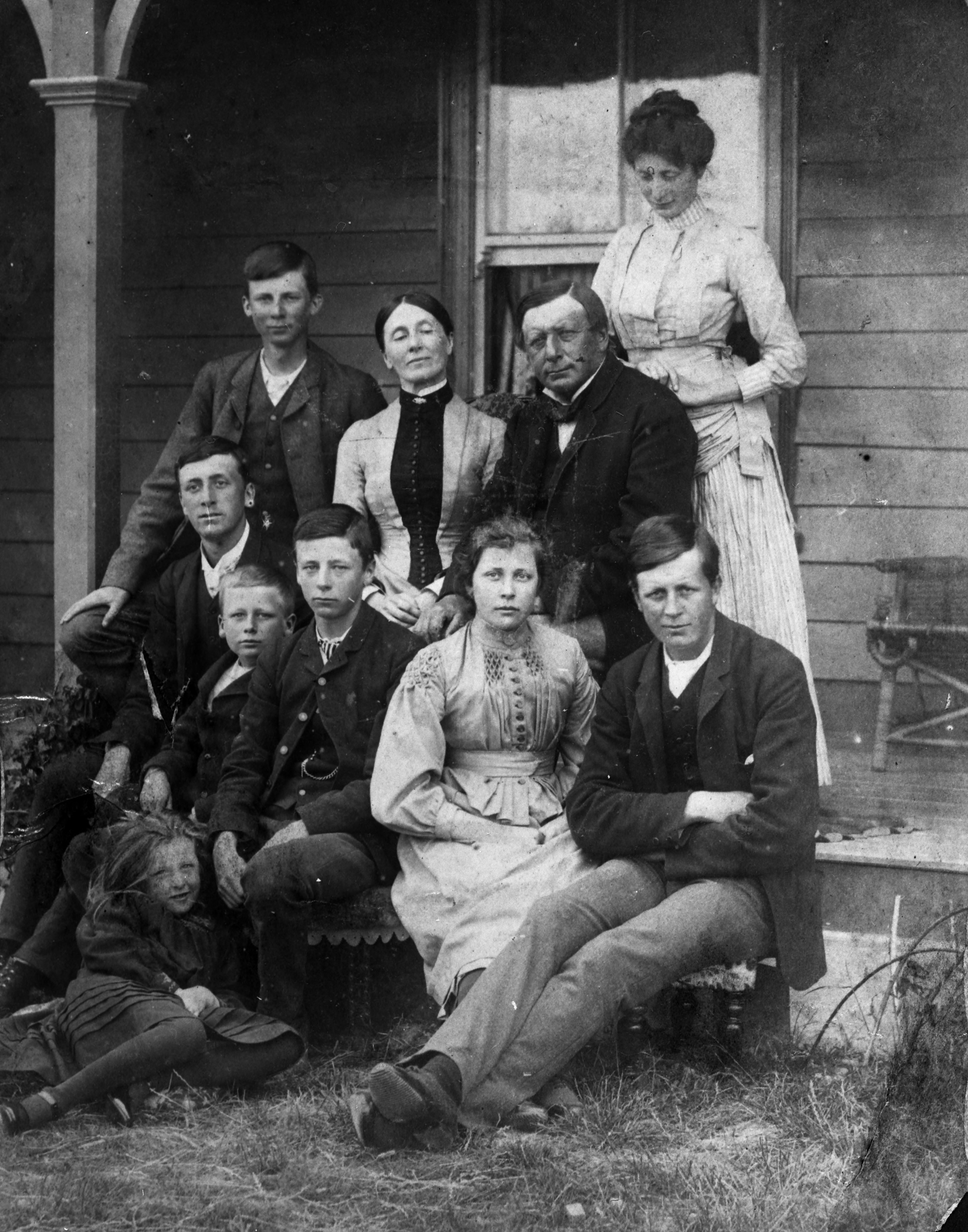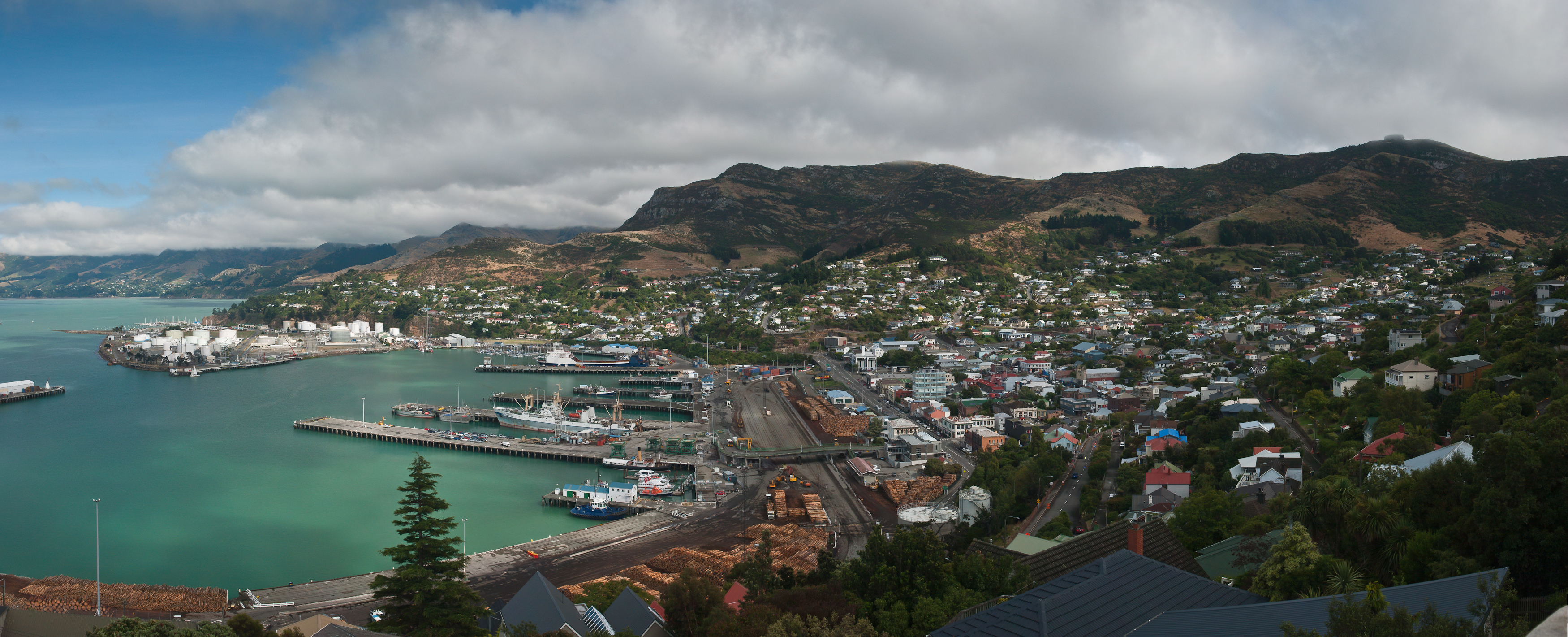|
John Rolleston (New Zealand Politician)
John Christopher Rolleston (4 December 1877 – 22 May 1956) was a Reform Party Member of Parliament in New Zealand. Early life Rolleston was born in Christchurch on 4 December 1877,See talk page the son of Mary Rolleston. His father, the last Superintendent of the Canterbury Province, William Rolleston was in Wellington for the third session of the 6th Parliament and intended to be home in the second week of December, but it is likely that he will have missed the birth, as his seventh child (of nine in total) was born a week early. At the time of his birth, the family was living at Linwood House. His grandfather was Joseph Brittan (1805–1867). From 1880 to 1884, the Rolleston family lived in Wellington. William Rolleston held various ministerial posts in ministries led by John Hall (1879–1882), Frederick Whitaker (1882–1883) and Harry Atkinson (1883–1884) and their house in Molesworth Street, on the site that is these days occupied by Saint Paul's Cathedral, gave e ... [...More Info...] [...Related Items...] OR: [Wikipedia] [Google] [Baidu] |
Christchurch
Christchurch ( ; mi, Ōtautahi) is the largest city in the South Island of New Zealand and the seat of the Canterbury Region. Christchurch lies on the South Island's east coast, just north of Banks Peninsula on Pegasus Bay. The Avon River / Ōtākaro flows through the centre of the city, with an urban park along its banks. The city's territorial authority population is people, and includes a number of smaller urban areas as well as rural areas. The population of the urban area is people. Christchurch is the second-largest city by urban area population in New Zealand, after Auckland. It is the major urban area of an emerging sub-region known informally as Greater Christchurch. Notable smaller urban areas within this sub-region include Rangiora and Kaiapoi in Waimakariri District, north of the Waimakariri River, and Rolleston and Lincoln in Selwyn District to the south. The first inhabitants migrated to the area sometime between 1000 and 1250 AD. They hunted moa, which led ... [...More Info...] [...Related Items...] OR: [Wikipedia] [Google] [Baidu] |
Harry Atkinson
Sir Harry Albert Atkinson (1 November 1831 – 28 June 1892) served as the tenth premier of New Zealand on four separate occasions in the late 19th century, and was Colonial Treasurer for a total of ten years. He was responsible for guiding the country during a time of economic depression, and was known as a cautious and prudent manager of government finances, though distrusted for some policies such as his 1882 National Insurance (welfare) scheme and leasehold land schemes. He also participated in the formation of voluntary military units to fight in the New Zealand Wars, and was noted for his strong belief in the need for seizure of Māori land. Early life Atkinson, born in 1831 in the English village of Broxton, Cheshire, received his education in England, but chose at the age of 22 to follow his elder brother William to New Zealand. He was accompanied by his brother Arthur together with members of the Richmond family. On arriving in New Zealand, Harry and Arthur bought fa ... [...More Info...] [...Related Items...] OR: [Wikipedia] [Google] [Baidu] |
Takapau
Takapau is a small rural community in the Central Hawkes Bay in New Zealand. It is located 20 kilometres west of Waipukurau, off State Highway 2, and has a population of more than 500. The original township was founded in 1876 by farmer Sydney Johnston from Oruawharo station. Johnston's family donated land for a school and churches, and built the local library, public hall and, later, Plunket rooms. Many streets are named after members of the family. Takapau was once the centre of a large flax milling industry, and the community takes its name from the flax that grew in the expansive Takapau plains. The Māori word translates literally as "mat" or "carpet". The largest business in Takapau is now the Silverfern Farms meat-processing plant, founded by the Hawke's Bay Farmers’ Meat Company in 1981. Kintail Honey, one of country's largest honey-packing and beekeeping operations, is also based in the town. There are two schools in Takapau. The Trappist monastery, the Southern ... [...More Info...] [...Related Items...] OR: [Wikipedia] [Google] [Baidu] |
The Evening Post (New Zealand)
''The Evening Post'' (8 February 1865 – 6 July 2002) was an afternoon metropolitan daily newspaper based in Wellington, New Zealand. It was founded in 1865 by Dublin-born printer, newspaper manager and leader-writer Henry Blundell, who brought his large family to New Zealand in 1863. With his partner from what proved to be a false-start at Havelock, David Curle, who left the partnership that July, Henry and his three sons printed with a hand-operated press and distributed Wellington's first daily newspaper, ''The Evening Post'', on 8 February 1865. Operating from 1894 as Blundell Bros Limited, his sons and their descendants continued the very successful business which dominated its circulation area. While ''The Evening Post'' was remarkable in not suffering the rapid circulation decline of evening newspapers elsewhere it was decided in 1972 to merge ownership with that of the never-as-successful politically conservative morning paper, '' The Dominion'', which belonged to ... [...More Info...] [...Related Items...] OR: [Wikipedia] [Google] [Baidu] |
Auckland War Memorial Museum
The Auckland War Memorial Museum Tāmaki Paenga Hira (or simply the Auckland Museum) is one of New Zealand's most important museums and war memorials. Its collections concentrate on New Zealand history (and especially the history of the Auckland Region), natural history, and military history. The present museum building was constructed in the 1920s in the neo-classicist style, and sits on a grassed plinth (the remains of a dormant volcano) in the Auckland Domain, a large public park close to the Auckland CBD. Auckland Museum's collections and exhibits began in 1852. In 1867 Aucklanders formed a learned society – the Auckland Philosophical Society, later the Auckland Institute. Within a few years the society merged with the museum and '' Auckland Institute and Museum'' was the organisation's name until 1996. Auckland War Memorial Museum was the name of the new building opened in 1929, but since 1996 was more commonly used for the institution as well. From 1991 to 2003 the muse ... [...More Info...] [...Related Items...] OR: [Wikipedia] [Google] [Baidu] |
Trooper (rank)
Trooper (abbr. Tpr) from the French "''troupier''" is the equivalent rank to private in a regiment with a cavalry tradition in the British Army and many other Commonwealth armies, including those of Australia, Canada, South Africa and New Zealand; it is also used by the Irish Army. In the British Army the Royal Tank Regiment, although not a former cavalry unit also uses the term Trooper as do the Special Air Service and Honourable Artillery Company. Airtrooper (Atpr) is used in the Army Air Corps. Cavalry units are organized into squadrons, further divided into troops, hence a trooper is a member of a troop. "Trooper" can also be used colloquially to mean any cavalry soldier (although not usually an officer). In the United States Cavalry and airborne forces, "trooper" is a colloquialism that has traditionally been used not as a rank, but rather as a general term for any enlisted soldier. Cavalry Troopers are generally considered to be socially a cut above other soldiers. Th ... [...More Info...] [...Related Items...] OR: [Wikipedia] [Google] [Baidu] |
Lyttelton, New Zealand
Lyttelton (Māori: ''Ōhinehou'') is a port town on the north shore of Lyttelton Harbour / Whakaraupō, at the northwestern end of Banks Peninsula and close to Christchurch, on the eastern coast of the South Island of New Zealand. As a landing point for Christchurch-bound seafarers, Lyttelton has historically been regarded as the "Gateway to Canterbury" for colonial settlers. Until the 2020 coronavirus pandemic, the port has been a regular destination for cruise ships. It is the South Island's principal goods-transport terminal, handling 34% of exports and 61% of imports by value. In 2009 Lyttelton was awarded Category I Historic Area status by the Historic Places Trust (NZHPT) defined as "an area of special or outstanding historical or cultural heritage significance or value", not long before much of the historic fabric was destroyed in the 2011 Christchurch earthquake. Location Lyttelton is the largest settlement on Lyttelton Harbour / Whakaraupō, an inlet on the northwe ... [...More Info...] [...Related Items...] OR: [Wikipedia] [Google] [Baidu] |
World War I
World War I (28 July 1914 11 November 1918), often abbreviated as WWI, was one of the deadliest global conflicts in history. Belligerents included much of Europe, the Russian Empire, the United States, and the Ottoman Empire, with fighting occurring throughout Europe, the Middle East, Africa, the Pacific, and parts of Asia. An estimated 9 million soldiers were killed in combat, plus another 23 million wounded, while 5 million civilians died as a result of military action, hunger, and disease. Millions more died in genocides within the Ottoman Empire and in the 1918 influenza pandemic, which was exacerbated by the movement of combatants during the war. Prior to 1914, the European great powers were divided between the Triple Entente (comprising France, Russia, and Britain) and the Triple Alliance (containing Germany, Austria-Hungary, and Italy). Tensions in the Balkans came to a head on 28 June 1914, following the assassination of Archduke Franz Ferdin ... [...More Info...] [...Related Items...] OR: [Wikipedia] [Google] [Baidu] |
Waitomo District
Waitomo District is a territorial authority, located in the Waikato region, at the north of the King Country area in the North Island of New Zealand. A small part of the district, the locality of Tiroa, however, lies in the Manawatū-Whanganui region. The District covers the west coast from Te Maika, on Kawhia Harbour, to the north of Taharoa, to Mokau in the south and extends inland to Maniaiti / Benneydale and Mount Pureora. Demographics Waitomo District covers and had an estimated population of as of with a population density of people per km2. Waitomo District had a population of 9,303 at the 2018 New Zealand census, an increase of 396 people (4.4%) since the 2013 census, and a decrease of 135 people (−1.4%) since the 2006 census. There were 3,384 households, comprising 4,695 males and 4,605 females, giving a sex ratio of 1.02 males per female. The median age was 38.2 years (compared with 37.4 years nationally), with 2,082 people (22.4%) aged under 15 years, 1, ... [...More Info...] [...Related Items...] OR: [Wikipedia] [Google] [Baidu] |
Rangitata River
The Rangitata River is one of the braided rivers that helped form the Canterbury Plains in southern New Zealand. It flows southeast for from the Southern Alps (New Zealand), Southern Alps, entering the Pacific Ocean northeast of Timaru. The river has a catchment area of , and a mean annual flow of at Klondyke. The Māori language, Māori name "Rangitata" (Rakitata) has been variously translated as "day of lowering clouds", "close sky", and "the side of the sky". The river formed the Rangitata Valley, in the center of the Southern Alps, and the on-location photography of the Edoras set from ''The Lord of the Rings: The Two Towers'', and ''The Lord of the Rings: The Return of the King, The Return of the King'' was filmed in this valley, on and around Mount Sunday. Several remote sheep stations are located near Mount Sunday. These include Mesopotamia (station), Mesopotamia, Mt Potts, and Erewhon. Erewhon was named by Samuel Butler (novelist), Samuel Butler who was the first white ... [...More Info...] [...Related Items...] OR: [Wikipedia] [Google] [Baidu] |








